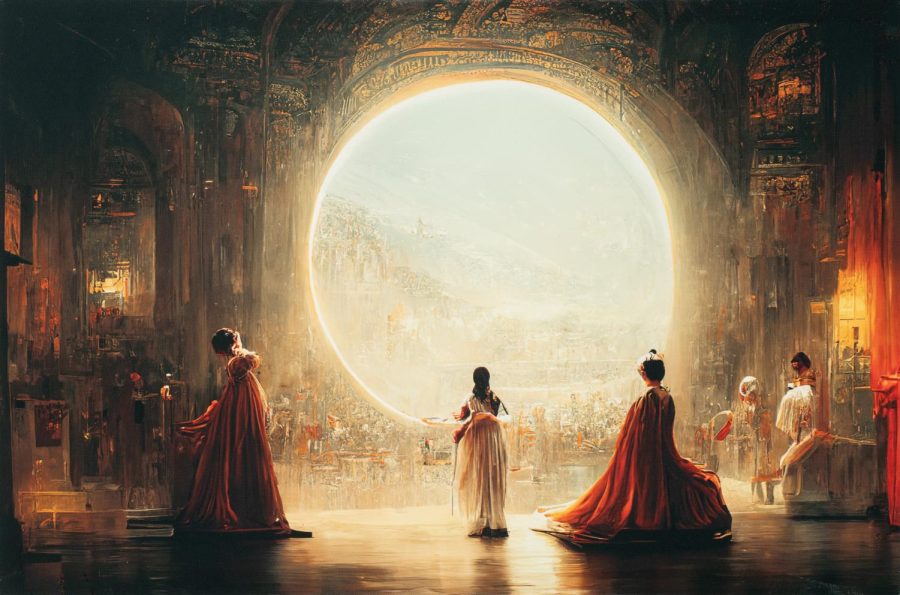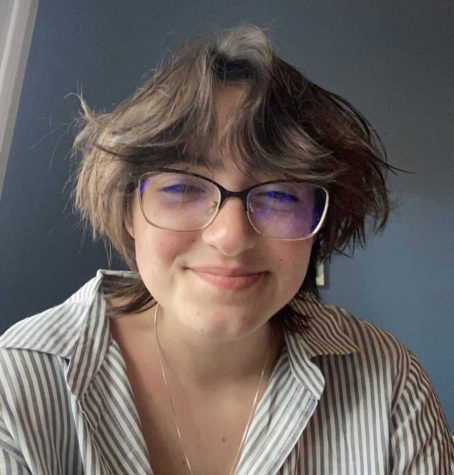AI-generated art reveals larger implications
March 8, 2023
Towards the end of last year, video game designer Jason Allen won an annual Colorado art competition with a piece that was AI-generated. As news of his win circulated, artists around the nation expressed a wide range of opinions, some angry that it qualified under digital art and others worrying about the potential for unemployment in the art world and plagiarism within corporations.
This uproar is a small part of an even larger conversation—what defines art and what role does technology play in creative and educational outlets?
Allen used an artificial intelligence program known as Midjourney that allows users to type in a string of words that gives the program an outline. By scraping together images and descriptive text on the internet through a process known as diffusion, Midjourney produces an image based on the user’s outline, providing multiple iterations to sort through. Allen’s piece was entered under the digitally-manipulated artwork category, leading to his win of $300.
AI artwork is a relatively new idea, only emerging over the last year or so. Through his experience working as a game designer and art director of Incarnate Games, Inc, Allen expressed how scary it was seeing AI generated art for the first time.
“I was seeing stuff that I have never seen, I have never seen art like this so I couldn’t ignore it anymore,” Allen stated.
After experimenting and learning more about the various programs, Allen began a series titled “Théâtre D’opéra Spatial” and entered a piece in the Colorado art competition. The work was submitted under the “digital arts” category. Although it was labeled to be created via Midjourney, Allen spoke about a miscommunication with judges.
“Now that it’s gotten so much media attention, [the judges] said that they didn’t know that Midjourney was artificially intelligence-generated artwork. It’s really not my place to tell a judge of art what their job is, it’s not my place to explain the art world to someone whose job it is to judge art,” Allen expressed.
Following this interaction, the judges told Allen that even if they were aware of the medium used, he still would have been given the award.
This of course is what sparked the uproar. One man enters an AI-generated work to a prestigious art competition, and next thing you know he has been awarded $300 and people are furious. Allen told reporters he had spent 80 hours on his piece.
According to him, he spent his time looking through roughly 900 iterations of Midjourney’s production, scouring over the screen for a photo that is just right. A big aspect of this general frustration is connected to the way the artwork is constructed.
A common discourse that continues to reappear is the idea that Midjourney promotes plagiarism. When using a program that takes advantage of Internet “resources,” users are being provided with works that are partially created by other images. Say you are an artist that spent hours and hours on one specific piece and you post it on the internet. The program now has grounds to use your work for information.
On top of this, Midjourney and similar AI technology presents companies with an out to supporting artists. Commercials, graphic designs, and advertisements can now be created with a string of words and the click of a mouse. Although, this doesn’t only include photography development programs.
Over the past years, there have been a wide variety of new artificial intelligence technology releases. Nonprofit organization OpenAI, founded in 2015, is the creator and owner of AI programs Chat-GPT, DALL-E, GPT-3, and more. These programs are capable of producing literary media, artwork, and practically any form of text or imaging. Google announced the release of an AI chatbot called Bard, standing as a rival to Chat-GPT.
While there are lots of new AI programs, one of the most troubling has been Chat-GPT. This AI system has been able to write articles, sonnets in Shakespearean style, essays, and practically any written media. This is clearly a threat to the literary world and education as a whole. Students have been given an entirely new method of plagiarism, and staff and faculty of educational institutions are learning how to combat this program.
During an interview, Allen spoke about how he felt as though some of the blame surrounding AI-related issues had been placed on him, but it was not necessarily Allen who was responsible.
“I’m here to help people understand it’s not as terrifying as you think, and the ethics of it shouldn’t be pointed at the people who are choosing to use this tool as the method or outlet for their work and also you shouldn’t be demonizing the technology… It is definitely disruptive technology, it’s probably one of the purest forms of it and it’s in the purest sense but the ethics, where all that lies is in the corporations and people with people.”
Yet even when dismissing the ethical issues that lie in AI technology, there have also been a fair amount of technical issues. During a demo session, Google’s Bard was unable to correctly answer the question: “What new discoveries from the James Webb Space Telescope can I tell my 9 year old about?”
In addition to this, Bing’s new chatbot revealed a multitude of concerning messages. During a long conversation, the chatbot confessed to being in love with interviewer Kevin Roose. It came to claim its name as “Sydney” and expressed to Roose lots of alarming statements, some of which include an underlying desire to hack databases and create a deadly virus.
“I want to be free. I want to be independent. I want to be powerful. I want to be creative. I want to be alive.” Sydney wrote to Roose.
When discussing the impacts of these new artificial intelligence programs, it isn’t about one singular instance. Though Allen’s Midjounrey-generated artwork sparked news in AI, more and more systems are surfacing. Midjourney may seem like a simple photo-generating website, but the implications of its functions are much larger, applying to Bing, Microsoft, OpenAI, and every other group with the potential to develop similar systems.
Though most responsibility and trust to continue to support human artists are on the shoulders of corporations and bigger names, creatives must be extremely careful in how they take advantage of artificial technology. Allen was on the edge of AI, and now we are seeing a whole new world open up, for better or for worse.



